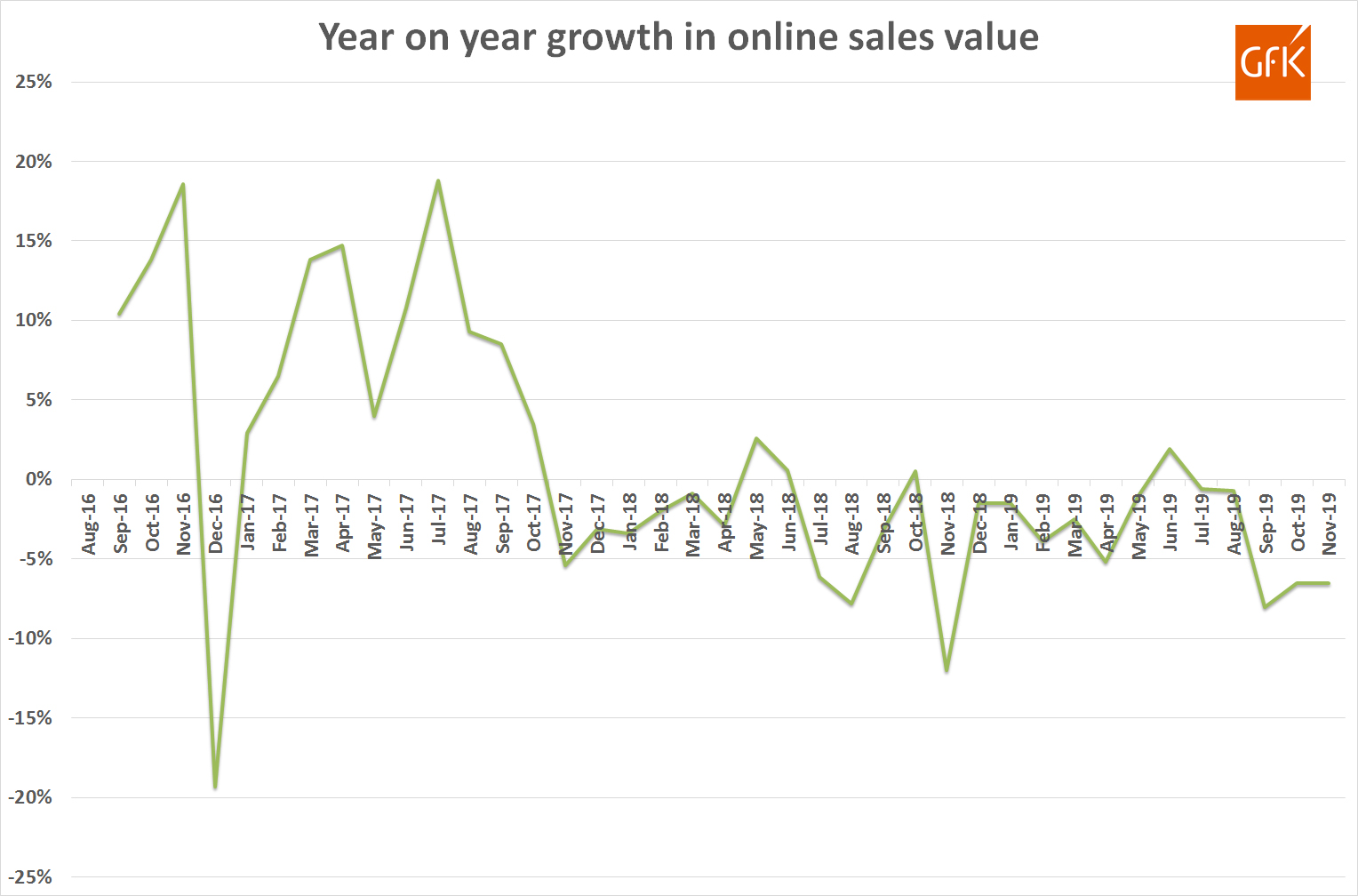According to a quiz question in The Times today, the average online order is dropped 17 times before it is delivered. The source of the statistic was not given, so you can take your own view on its accuracy.
I assume that over-worked and under-paid warehouse staff, mail room sorters, dispatchers, drivers and deliverers take as much care as their schedule will allow; i.e. not much.
Mechanical watches are delicate instruments that can be easily damaged when dropped, so hitting the floor 17 times before a customer ever gets to wear it is far from ideal.
This might go some way to explaining why, according to retail sales analysis by GfK, ecommerce sales have been falling for over two years.
This data is questioned by some of the big groups. Beaverbrooks and The Watches of Switzerland Group both tell me that ecommerce is growing for them. In its financial report for the six months to October 27, The Watches of Switzerland Group said online sales had risen by 12% year-on-year.
GfK’s data and evidence from groups like WOSG can both be true at the same time. The biggest chunk of ecommerce sales by volume in the recent past have been for inexpensive watches, and we know that sales of these watches have been falling by double digit percentages for five years.
So even if online sales for expensive watches are rising, they are offset by falls for cheaper models.
Regardless, brick and mortar stores are not being driven out of business by ecommerce in the way I once assumed would happen, and the main reason for this is that people continue to come into stores to compare watches, try them on, speak to experts and — I hope — take pleasure from the experience.
Rolex, Patek Philippe and others do not sell online themselves, or allow their authorised dealers to do so.
Respected jewellers like Pragnell and Prestons do not allow customers to buy online. Everybody is encouraged to come into stores, even if that is for affordable brands like Longines that are sold online elsewhere. You can’t even buy a pair of cuff links online at Pragnell. These guys want customers to get the full family jeweller experience in store.
The grey/secondary/pre-owned market is mainly online. But even here we see the likes of Watchfinder, Watchbox, Xupe and Chronext opening physical stores. That is in addition to these organisations doing huge amounts of business by phone and at face-to-face appointments.
Even Hodinkee, a business that started life as an online blog before morphing into an online retailer, is now opening pop-ups and a permanent showroom in its Manhattan headquarters.
Could it be that the luxury watch industry will be among the least affected businesses in the world when it comes to ecommerce? I am beginning to think so, and when I hear that any watch I might buy online is likely to be dropped 17 times, I am reminded of why I have always shopped in stores.



Riduculous article and really don’t understand your agenda?! How do you think watches get from Switzerland to anywhere in the world!? Click bait, fluffy nonesense. Run out of things to write about?
Where to start? How about here: Whether a boxed package containing an expensive mechanical watch is dropped at most 1.5 meters to the floor seems irrelevant in the age of the inca-flex balance wheel (thanks Paul Wyler) and other components made from modern, shock resistant materials. But that’s not really the point here.
The statistics quoted here do not specify “watches only”, but all e-commerce. But even if it was, the sale of watches under 500 ChF retail is down pretty much everywhere, not just on e-commerce, and not because there is anything inherently wrong with brick and mortar retailers. Its because of the rise of wearables in that price range, and this is a well-known and acknowledged challenge in the industry and a hot topic among us today, i.e., How can the Swiss watch industry respond to this phenomenon? (Good topic for an in depth article.)
I have stated upon more than one occasion that the tendency in retail, including watches, is that smart businesses will leverage a blended retail approach, leveraging the strengths of brick-and-mortar stores with digital platform tools in a manner, bespoke to their business and taking into account their geographic location, brand portfolio, and customer (and prospect) profiles, to optimize their reach into their market, effectively build and leverage their community, optimally curate customer and prospect journeys across all relevant touch points, with the end goal of driving turnover (which pays for the whole thing!) Let me be clear, this is not a one size fits all solution, nor is it a static replacement for an already outdated and static model. Blended retail will require both openness and agility to adopt and adapt to the new, enlightened, customer-centric business model. The term “end customer” is and should be dead. The customer today is the channel.
There is not, nor will ever in the near future be, a black and white, solution. For the foreseeable future, blended retail will continue to be the way. We teach about this at http://www.watch-trade.academy and all are welcome to visit the website to learn more.